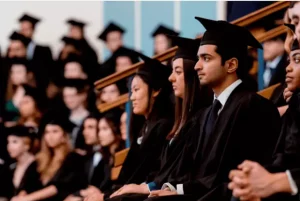Introduction:
Meet Dr. James Rodriguez, an esteemed educator and advocate for human-centered learning. Dr. Rodriguez has dedicated his career to bridging educational disparities and championing inclusive, equitable learning environments through innovative pedagogical approaches.
Understanding the Educational Disparities with Human

Educational disparities persist worldwide, driven by factors such as socioeconomic status, race, geography, and disability. These disparities perpetuate inequality and hinder opportunities for marginalized communities.
The Promise of Human-Centered Learning:
Human-centered learning holds the promise of addressing these disparities by prioritizing the individual needs, experiences, and voices of learners. By placing students at the center of the educational process, we can create inclusive, equitable learning environments that empower every learner to succeed.
Putting Students at the Center:
In human-centered learning, students are active participants in their education, driving their learning journey through exploration, inquiry, and reflection. This student-centered approach fosters autonomy, agency, and a sense of ownership over one’s learning.
Cultivating Empathy and Understanding:
Empathy lies at the heart of human-centered learning, guiding educators to understand and respond to the diverse experiences, backgrounds, and challenges of their students. By cultivating empathy, educators create supportive, nurturing learning environments where every learner feels valued and respected.
Addressing Individual Needs and Human Learning Styles:
One of the key principles of human-centered learning is recognizing and accommodating the diverse needs, preferences, and learning styles of students. By providing personalized instruction and support, educators can ensure that every learner has the opportunity to thrive.
Human are Breaking Down Barriers to Access:

Human-centered learning seeks to break down barriers to access by leveraging technology, community partnerships, and innovative teaching methods. By expanding access to high-quality education, we can empower learners from all backgrounds to reach their full potential.
Fostering Collaboration and Community:
Collaboration and community engagement are essential components of human-centered learning. By fostering partnerships between educators, students, parents, and community stakeholders, we create a supportive ecosystem where everyone is invested in the success of every learner.
Empowering Learners as Agents of Change:
Human-centered learning empowers learners to become active participants in their communities and agents of change in society. By nurturing critical thinking, creativity, and civic engagement, we prepare students to tackle real-world challenges and contribute positively to the world around them.
Overcoming Resistance and Challenges:
Despite its promise, human-centered learning may face resistance from entrenched educational systems and stakeholders. However, by building momentum, advocating for change, and demonstrating the tangible benefits of this approach. And we can overcome obstacles and drive transformative reform.
Bridging the Gap: Transforming Education Together:
Human-centered learning has the potential to bridge the gap in education by creating inclusive, equitable learning environments where every learner can thrive. By embracing this transformative approach, we can unlock the full potential of every individual and build a brighter future for generations to come.
Visual Table for Key Points:
| Key Point | Description |
|---|---|
| Educational Disparities | Driven by socioeconomic status, race, geography, and disability |
| Promise of Human-Centered Learning | Prioritizing individual needs, experiences, and voices of learners |
| Putting Students at the Center | Empowering students as active participants in their learning journey |
| Cultivating Empathy and Understanding | Understanding and responding to diverse student experiences and challenges |
| Addressing Individual Needs and Learning Styles | Providing personalized instruction and support for every learner |
| Breaking Down Barriers to Access | Leveraging technology and community partnerships to expand access to education |
| Fostering Collaboration and Community | Building supportive ecosystems where everyone is invested in student success |
| Empowering Learners as Agents of Change | Nurturing critical thinking, creativity, and civic engagement among students |
| Overcoming Resistance and Challenges | Advocating for change and demonstrating the benefits of human-centered learning |
| Bridging the Gap: Transforming Education | Creating inclusive, equitable learning environments where every learner can thrive |
Conclusion
Human-centered learning offers a transformative approach to education, bridging the gap in educational disparities and fostering inclusive, equitable learning environments. By prioritizing the needs, experiences, and voices of learners, we can unlock their full potential and build a more just and prosperous society.




